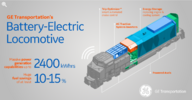The problem is the knee jerk reaction, some one has an accident in a 40 MPH limit, so reduce speed limit to 30 MPH, but ignore the person involved in the accident was actually doing 60 MPH, so reducing the speed limits has no real effect.
If every bend has a sign dangerous bend, you start to ignore them, if only ones which are dangerous have signs, people start to pay attention to them.
I have started to get use to the 20 MPH, I can accelerate to 20 MPH in a very short time, so need to leave less gap before pulling out, which is all well and good if the other driver is doing 20 MPH, but heard a few squeals of brakes after I have reached 20 MPH but the car behind is still closing the gap, so either my speedo is out, or his speedo is out.
As to insurance, if they can raise the premium when people are caught speeding, and with 20 MPH speed limits more are caught speeding, then they can reduce the base level premium for those who never get caught.
However what has this got to do with wireless charging. There is no reason not to have a hybrid, a vehicle which can charge batteries while travelling on some roads, and use the batteries on others

we are seeing it with railroads, so why not with other roads

the question is how to get the power into non railed vehicles, we are seeing the return of the trolley bus

but to fit pick up poles on cars to reach as high as those on the trolley bus is not really an option. And there is also the problem how would you charge for the energy?
If we can reduce peoples reliance on cars, then we can have trains and buses which people will actually use, and so make them pay for themselves, but I live in what is considered as a town, we have a garage which also sells some general store items, a post office which also sells some general store item, one general store bit like the one in open all house, a butchers, two hair dressers, and three pubs, and two churches, a railway station which only runs trains in the summer, and a bus service where first bus is far too late for people to go to work on, and last bus far to early for people to return from work on, and it takes longer than the train which has a 16 MPH speed limit so the 8 miles to a town with some supermarkets takes 50 minutes. I am actually faster on my e-bike, but the winding roads and hills means the e-bike is not really safe, specially in summer with tourists.
There is no foot path never mind cycle track to the town with supermarkets, the two supermarket towns Welshpool and Newtown are connected with a foot path and cycle track away from road traffic (canal tow path) but here I am forced to have a car, even if only used once a week.
But the mileage run up with the car is 75% if not more, when I go on holiday, so need a car which can be refuelled fast and without any special things on my phone, either use cash or standard bank card. I have watched people at the local railway messing around trying to pay for electric using a mobile phone, to me that is a non starter.





